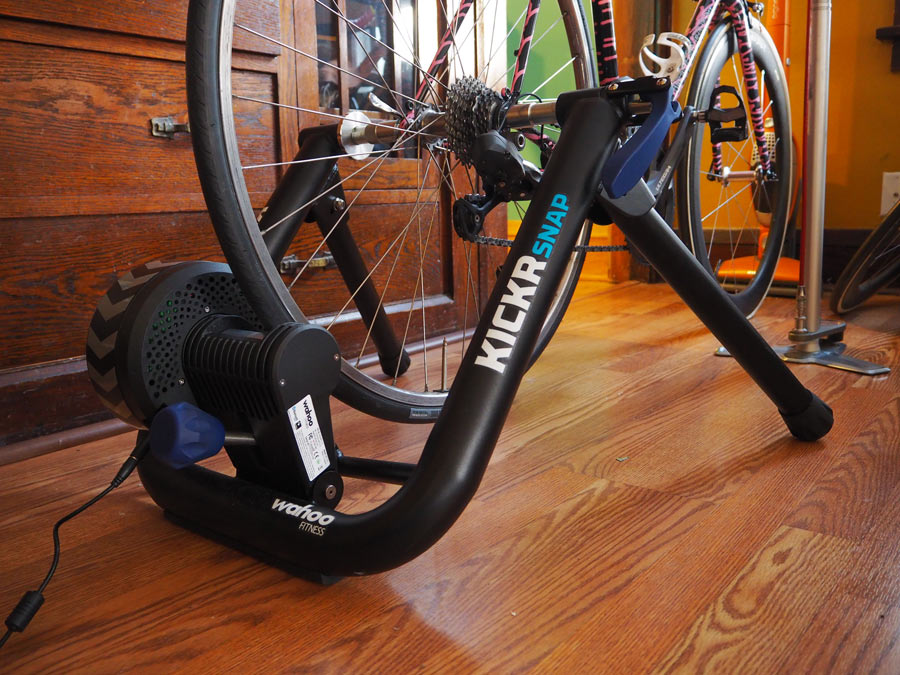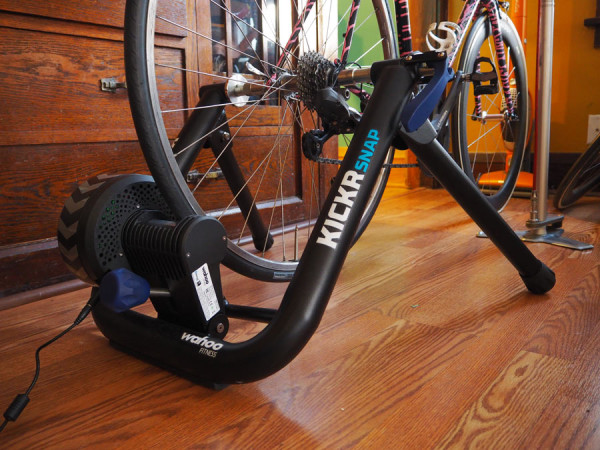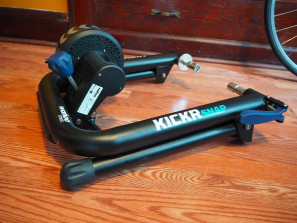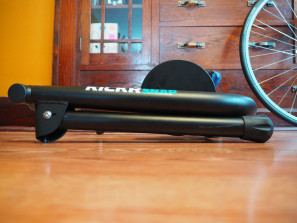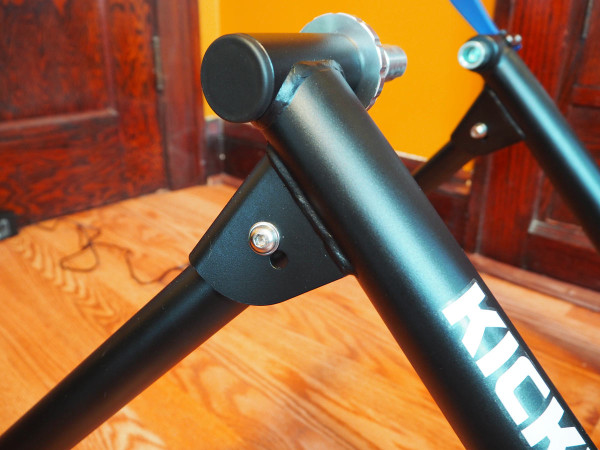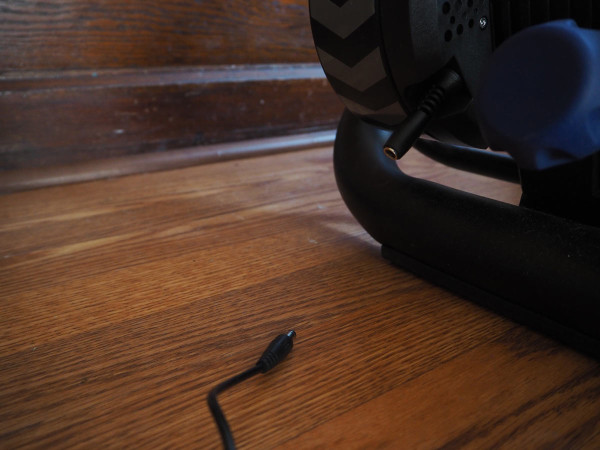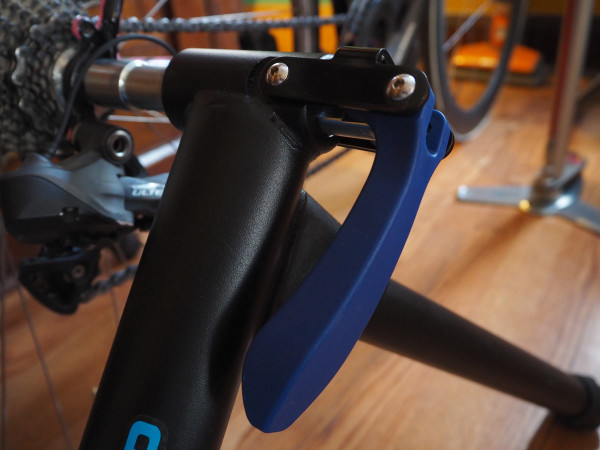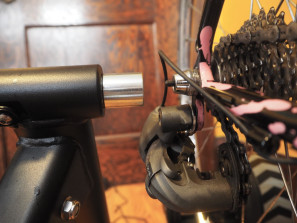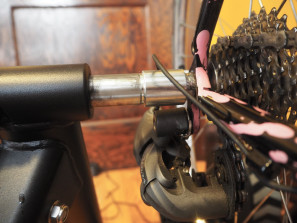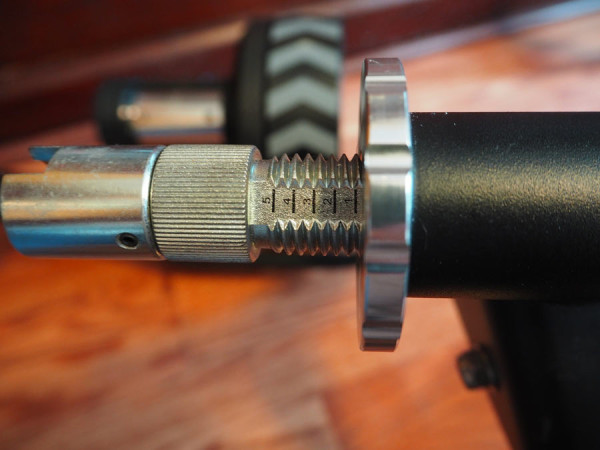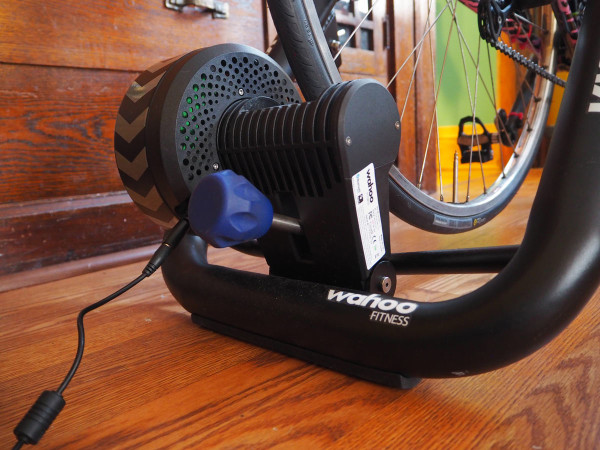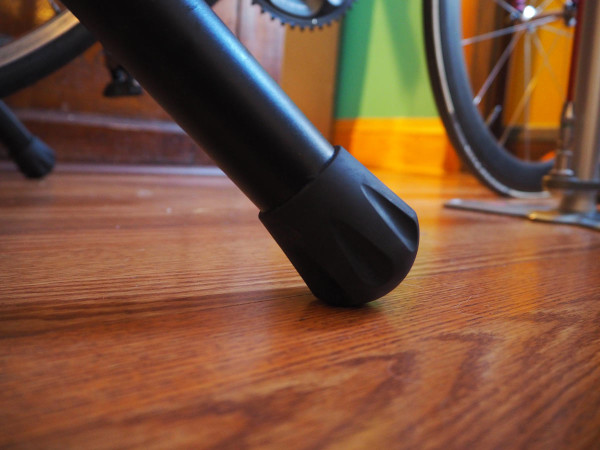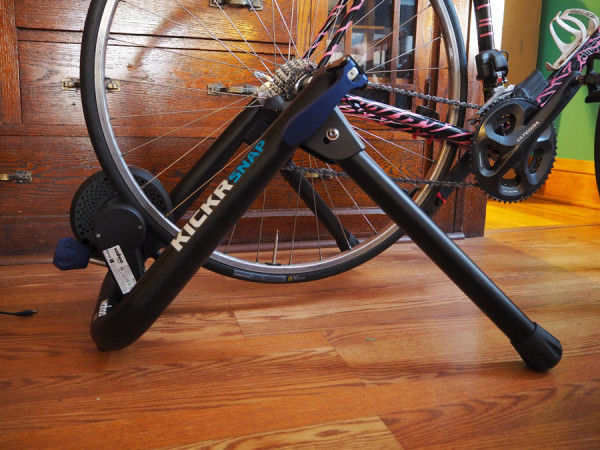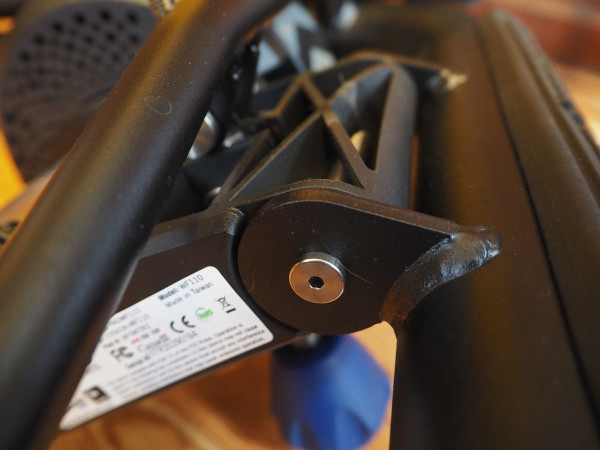I’ve always chalked my lack of enthusiasm for folding/wheel-on trainers up to the general unpleasantness of indoor winter training and seasonal affective disorder. It’s not fair to the genre of trainer because, frankly, there are so many reasons why this type is ideal for some users. When I was younger, short on space, and moving every few months, having a trainer that I could stow under my bed or easily throw in the back of my car was critical to my success and sanity. Also, when you are short on bikes, nothing beats having a trainer you can easily throw your bike on in poor weather for a quick workout, and just as easily pull it off for a longer ride without too much fiddling. But it’s seemed like the development dollars for trainers have been reserved for people who could invest in dedicated space, and dedicated training bikes.
I first had the opportunity to sample the KICKR SNAP this past summer and I was blown away by the ride quality. Could it be that the folding, wheel-on trainer finally got the treatment it deserves?
The KICKR SNAP includes the trainer, wheel block, skewer, cord, and power brick. The advertised weight of the full trainer system is under 38lbs making it heftier than average. But when one considers that a lot of that weight comes from the 10.5lb flywheel, one is comfortable with the extra mass. When unfurled, the trainer is 29in wide at the legs, and 25in deep- giving it a wide stance and a ton of stability under all outputs.
Also, the trainer folds, making it easy to store or throw in the back of a car for trips over the holidays.
Functionally, the KICKR SNAP behaves very similar to the original KICKR direct-mount model- the major difference being that while the KICKR claims an accuracy of +/-2%, the SNAP claims an accuracy of +/-5%. Also, the maximum wattage of the SNAP is only 1100W rather than the 1550W of the original KICKR. Both feature ANT+ and Bluetooth 4.0 compatibility.
The SNAP allows for roller placement for wheels as small as 24in, featuring a second leg orientation to help lower the axle to the ground. The trainer axle clamp supports bikes with 130mm to 135mm rear spacing, or 12mmx142mm thru axles with adapters (purchased separately).
The cord and powerbox feature a quick disconnect and a ton of stress-relieving features at the trainer interface. If you have a tendency to trip over your own gear, you’ll yank the cord out of the coupler rather than damage the trainer- something I experienced in practice. If you’re traveling with your trainer, you can disconnect the cord and power box and store them somewhere more responsible/less prone to damage.
Installation and Set-Up
The first notable installation feature is the large blue lever used to actuate the axle clamp. The linkage it’s attached to gives the clamp a throw that is substantial (3.5cm) compared to those of other wheel-on trainers (less than 2cm- or just enough to clear the skewer interface).
This extra clearance between the clamping interface and the skewer makes wheel installation and removal process much less cumbersome, meaning fewer opportunities to scratch components or your frame. There is no need to hold cables or wires out of the way because there is plenty of space for you to maneuver the back of the bike through the skewer jaws. This is a feature that I didn’t know I cared about until I experienced it.
Because the main frame of the KICKR SNAP is so robust, featuring a single bent 2in tube frame rather than a welded assembly of smaller diameter tubes, there isn’t as much flex inherent in the frame when clamping down the rear axle. Because you can’t afford to be as ham-fisted in your set-up, the clamp adjustment system features indexing marks and a massive diameter locking nut to help you dial everything in with precision and effectively lock it in place. The indexing marks also made it extremely easy for me to share my trainer with someone using a bike with wider spacing, allowing me to just reset to my preferred position rather than guessing. And that locking nut: as someone who is plagued by puny grip strength and the occasional inability to open jars, it was awesome to have a large diameter nut with which to adjust and secure the adjustment screw (nothing is more frustrating than needing to grab a wrench or ask for help with jammed equipment). It was easier to use than the smaller diameter knurled or plastic knobs I’ve experienced on similar-type trainers.
Once the rear wheel is secured, the tire is engaged on the roller with a few rotations of a knob at the back of the trainer. Initially, I thought I would miss the pedal-actuated tire engagement mechanisms of my other trainers- but I didn’t in application on the SNAP. The turning knob, like the stiff frame, makes it a little more challenging to ham-fist the installation of your bike on the trainer, which I really like. I could see how it could be more problematic for those with back issues, however.
I guess the best thing I can say about installation and set-up of the trainer and app is that it was so intuitive that – I don’t have much to say about it. The Wahoo Fitness app picked up my hodgepodge of ANT+ and Bluetooth sensors (I’m always losing heart rate straps) without issue. I selected the sensors I wanted to use, hit “start” on my Droid device, and I was on my way. The app walked me through a simple “spin down” calibration, and gave me reminders every few training sessions to re-calibrate. Easy peasy.
The Wahoo Fitness app allows you to manually control the output and resistance of the trainer through several modes… all covered in the previous KICKR review (though, I will say is that I was completely in love with the ERG setting, especially during long sessions in Zone 2).
Ride Test
Ultimately, ride quality is the most important aspect of any trainer, right? Having a natural-feeling inertial response in my pedal stroke is important enough to me that I spend most of my winter on a set of large diameter rollers.
This is where I was most impressed by the KICKR SNAP- the ride quality left little to be desired. Even with resistance on, acceleration and pedal stroke was smooth and felt totally natural, whether at high cadence or all-out efforts. This is largely in part to the 10.5lb flywheel. While lighter than that of the original KICKR, the SNAP’s flywheel is still massive when compared to those of other wheel-on trainers.
Downsides
There really was not a lot lacking in the trainer. One thing I would have appreciated was some method of adjustability on the legs to help fine tune the stance of the trainer. While the trainer was stable for my usage (which was done primarily on a trainer mat (not shown), I appreciate having the ability to adjust the trainer without having to use shims. Given the level of the trainer, this seems like a missed opportunity.
The other thing I would have appreciated was some kind of transporting bag, whether included with the trainer or available separately as an accessory.
Summary
The big takeaway for me from this test was that the KICKR SNAP is far from being a downgraded version of the original KICKR; it hasn’t been stripped of all its features to hit a price point. Rather, it is a lower cost, high-quality wheel-on smart trainer designed with a range of features that underscore thoughtful considerations for a user who wants to invest in a performance training experience, but who is drawn to a folding trainer for their needs.
As a smart trainer, it isn’t just an accessory to a virtual training system. The touch points and experience of installing and removing bikes, as well as the excellent quality of ride indicate that the whole user experience of the trainer was taken into account in the design, not just how it interfaces with interactive applications (as seems to be the emphasis for many smart trainers). The knobs and levers are all of high-quality materials and are shaped well for the application. But, if training “videogames” are you thing, it interfaces with interactive applications beautifully.
And lastly, something that really struck me about the overall trainer is how it is designed for longevity. There aren’t a lot of pinned joints. Almost everything is assembled or attached with a threaded fastener, including the rubber floor pad at the back of the trainer, indicating that this trainer can be repaired, adjusted, or tightened as time goes on rather than discarded after a few seasons of hard use. This signals to me that the KICKR SNAP gives a top notch all around product interface and training experience, but is designed to continue to give you that experience as your reliable off-season training buddy for years to come.
The KICKR SNAP retails for $699.99 MSRP.
